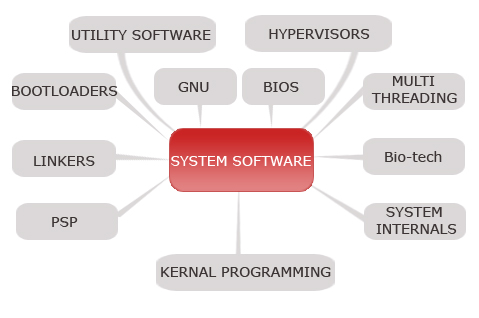System Software

System software (systems software) is computer software designed to operate and control the computer hardware and to provide a platform for running application software.System software can be separated into two different categories, operating systems and utility software.
- The operating system (prominent examples being z/OS, Microsoft Windows, Mac OS X and Linux), allows the parts of a computer to work together by performing tasks like transferring data between memory and disks or rendering output onto a display device. It also provides a platform to run high-level system software and application software.
- A kernel is the core part of the operating system that defines an API for applications programs (including some system software) and an interface to device drivers.
- Device drivers such as computer BIOS and device firmware provide basic functionality to operate and control the hardware connected to or built into the computer.
- A user interface "allows users to interact with a computer." Since the 1980s the graphical user interface (GUI) has been perhaps the most common user interface technology. The command-line interface is still a commonly used alternative.
- A kernel is the core part of the operating system that defines an API for applications programs (including some system software) and an interface to device drivers.
- Utility software helps to analyze, configure, optimize and maintain the computer, such as virus protection.
In some publications, the term system software also includes software development tools (like a compiler, linker or debugger).
In contrast to system software, software that allows users to do things like create text documents, play games, listen to music, or web browsers to surf the web are called application software. The line where the distinction should be drawn isn't always clear. Most operating systems bundle such software. Such software is not considered system software when it can be uninstalled without affecting the functioning of other software.
No comments:
Post a Comment